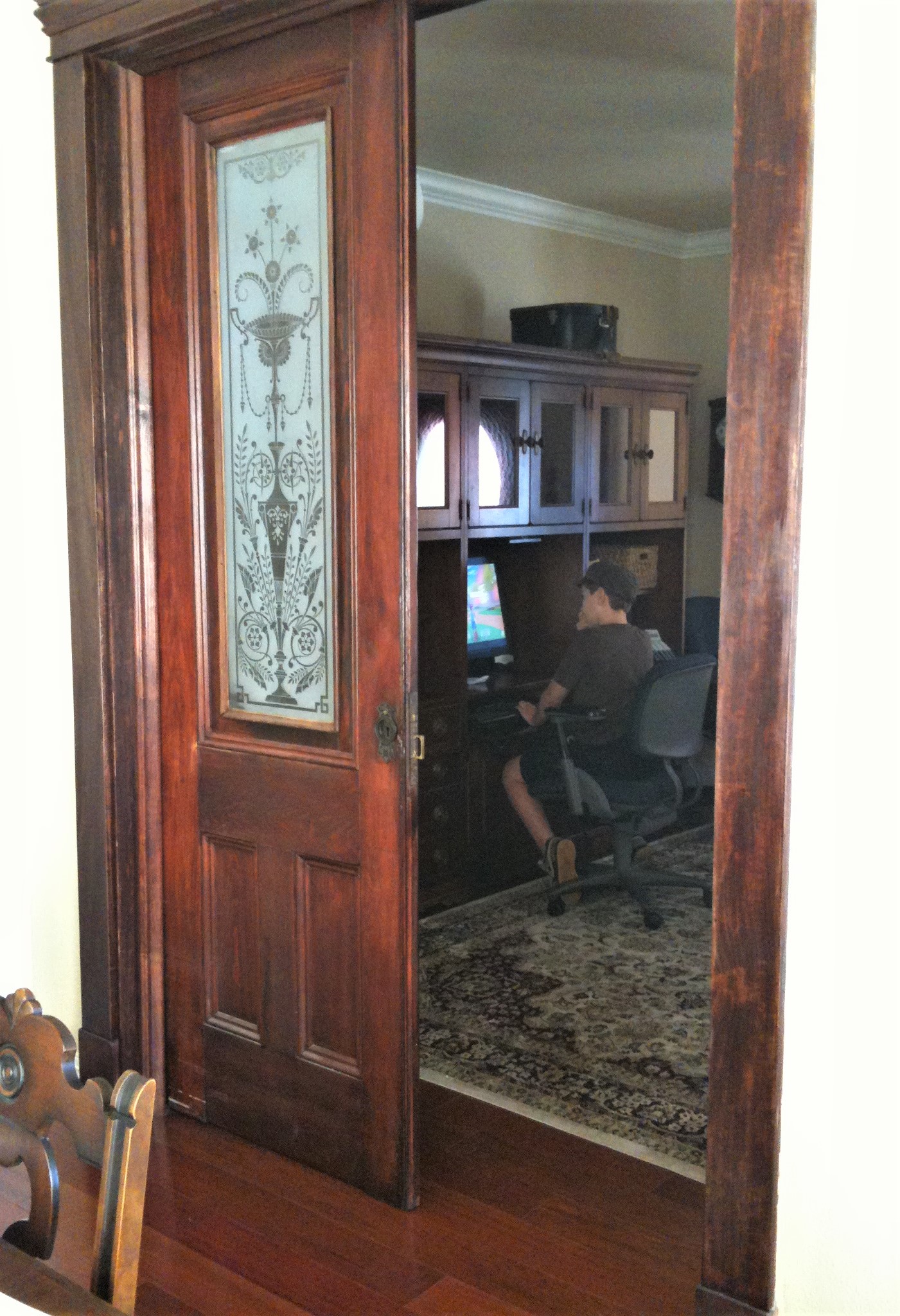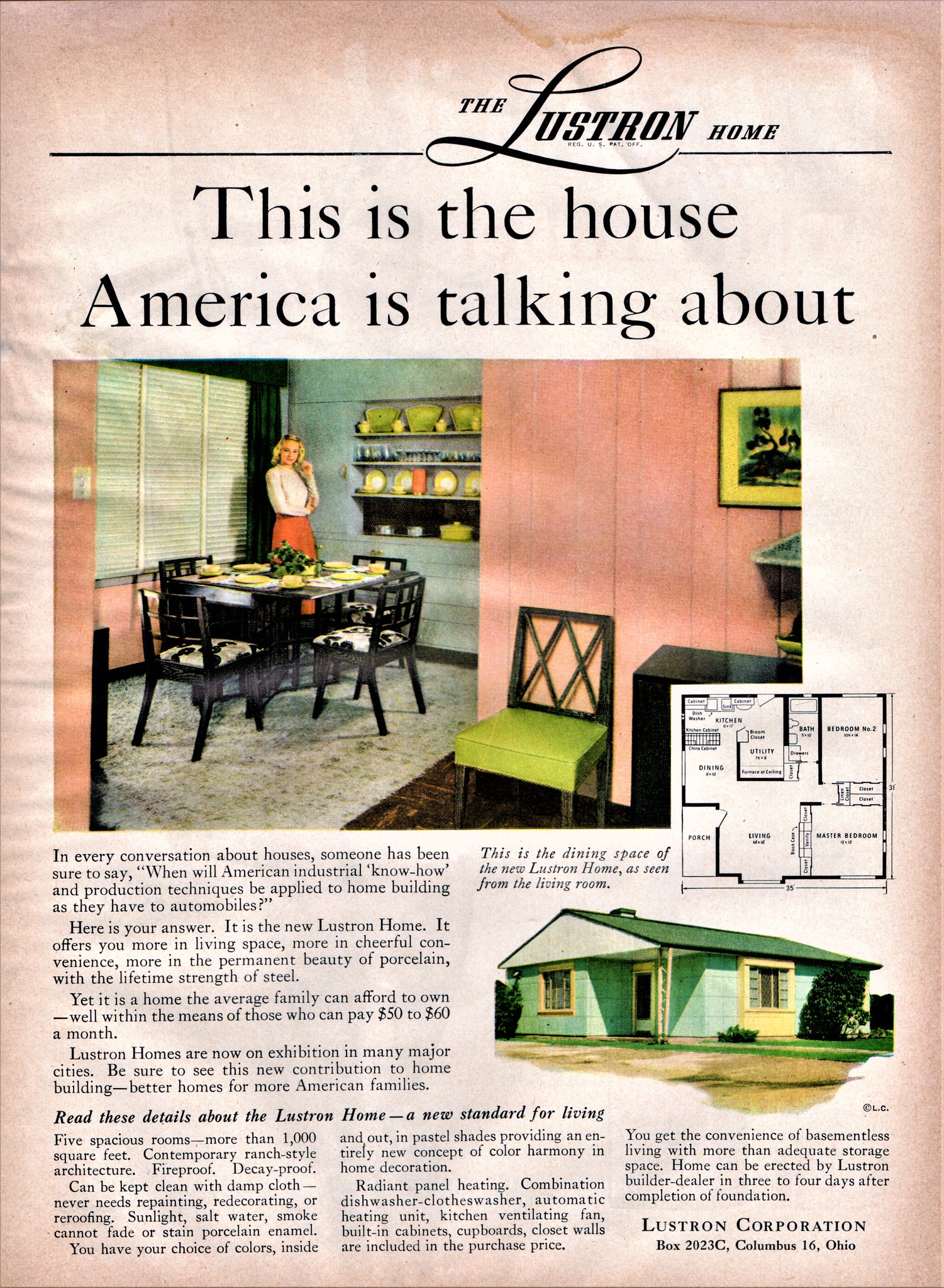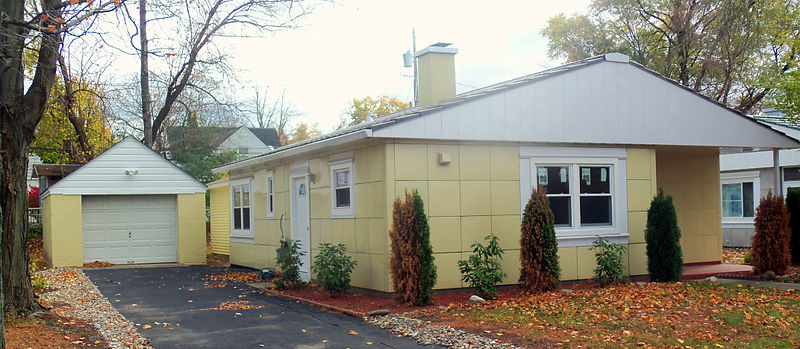Pocket door

|
| This photograph shows two pocket doors - one is open one is closed. The etched glass in the doors is roughly 150 years old. |
Contents |
[edit] Introduction
A pocket door is a sliding door that disappears completely into a space that has been created in the adjacent wall. Single or double versions are available. Unlike other types of sliding doors, most pocket doors are not made from glass, although they may feature glass windows, sometimes for decorative purposes.
[edit] History
Pocket doors originated in the 1850s, when they appeared both in the UK and the US. Their popularity grew in the 1880s as technological improvements were made to the installation methods. However, in the mid 1920s, their popularity began to fade and hinged doors became more fashionable. They once again sprang into favour in the 1950s, particularly in post-war housing.
[edit] Pocket doors in Lustron homes
Pocket doors were a common feature in a type of affordable housing in the US called Lustron houses. More than 1,000 of these homes were built after World War II to help address the housing shortage for returning veterans.

|
| This Lustron home ad is from 1948. |
Prefabricated from enameled steel, Lustron houses were designed by Carl Strandlund. Their primary purpose was to provide durable housing that was efficient in terms of space usage. According to the sales brochure, "all the floor space in the house is living space." This is why pocket doors were used throughout many of the model homes.
In the Lustron homes, the pocket doors were made from the same moulded steel and porcelain enamel coating as the interior and exterior panels and cabinetry; the pocket doors arrived preinstalled in the walls.
The majority of remaining Lustron homes can be found in the state of Illinois, although there are surviving homes throughout the US. Some Lustron homes have been included on the National Register of Historic Places.

|
| This is one of five homes included in the Lustron houses of the Jermain Street Historic District in Albany, New York, USA. |
[edit] Applications
Pocket doors continue to be useful in modern applications and renovations, especially in situations where there is not enough space for a standard door. Because they do not require the same amount of clear space to open and close, they can free up a significant portion of a room. This can be useful in small rooms.
Pocket doors are frequently found in bathrooms and cupboards. They are also effective in spaces such as workshops, home offices, libraries, sitting rooms and other multipurpose rooms.
[edit] Installation
Most pocket doors are installed on tracks on the floor or on rollers in a track in the ceiling. There is also an open pocket door, which is a wall-hung sliding door. This option can be suitable for installations that require ease of use and access.
[edit] Related articles on Designing Buildings Wiki
Featured articles and news
Delivering for tenants; National Retrofit Hub
New report offers recommendations to strengthen energy efficiency standards to protect private renters.
Government consultations for the summer of 2025
A year of Labour, past and present consultations on the environment, the built environment, training and tax.
CMA competitiveness probe of major housing developers
100 million affordable housing contributions committed with further consultation published.
Homes England supports Greencore Homes
42 new build affordable sustainable homes in Oxfordshire.
Zero carbon social housing: unlocking brownfield potential
Seven ZEDpod strategies for brownfield housing success.
CIOB report; a blueprint for SDGs and the built environment
Pairing the Sustainable Development Goals with projects.
Types, tests, standards and fires relating to external cladding
Brief descriptions with an extensive list of fires for review.
Latest Build UK Building Safety Regime explainer published
Key elements in one short, now updated document.
UKGBC launch the UK Climate Resilience Roadmap
First guidance of its kind on direct climate impacts for the built environment and how it can adapt.
CLC Health, Safety and Wellbeing Strategy 2025
Launched by the Minister for Industry to look at fatalities on site, improving mental health and other issues.
One of the most impressive Victorian architects. Book review.
Common Assessment Standard now with building safety
New CAS update now includes mandatory building safety questions.
RTPI leader to become new CIOB Chief Executive Officer
Dr Victoria Hills MRTPI, FICE to take over after Caroline Gumble’s departure.
Social and affordable housing, a long term plan for delivery
The “Delivering a Decade of Renewal for Social and Affordable Housing” strategy sets out future path.
A change to adoptive architecture
Effects of global weather warming on architectural detailing, material choice and human interaction.
The proposed publicly owned and backed subsidiary of Homes England, to facilitate new homes.
How big is the problem and what can we do to mitigate the effects?
Overheating guidance and tools for building designers
A number of cool guides to help with the heat.
The UK's Modern Industrial Strategy: A 10 year plan
Previous consultation criticism, current key elements and general support with some persisting reservations.
Building Safety Regulator reforms
New roles, new staff and a new fast track service pave the way for a single construction regulator.


























